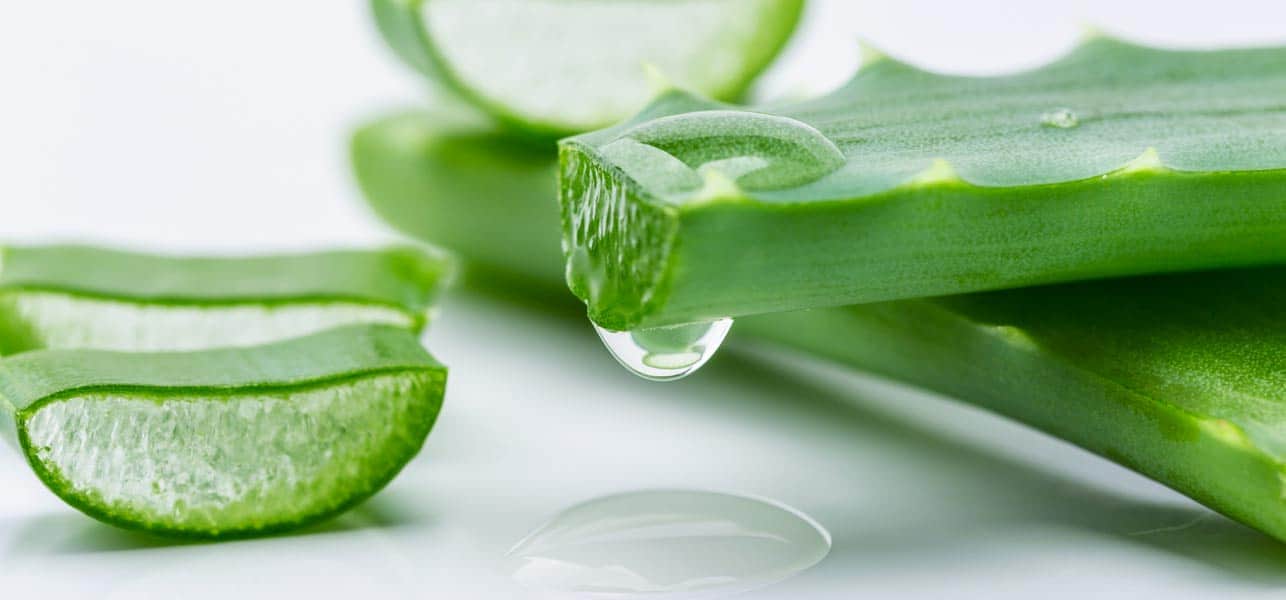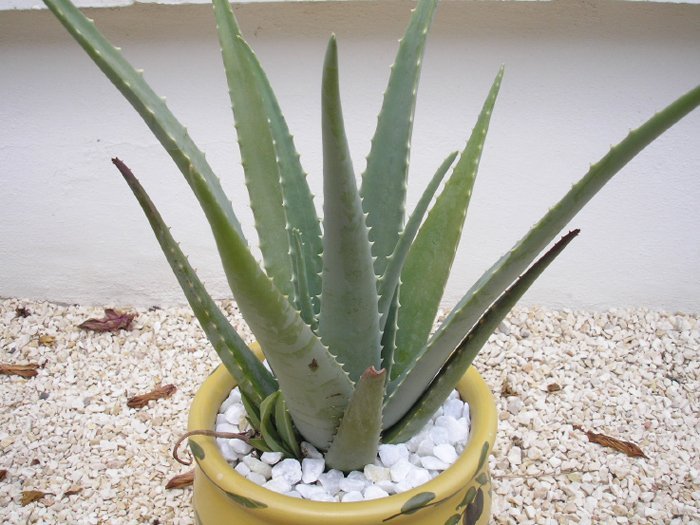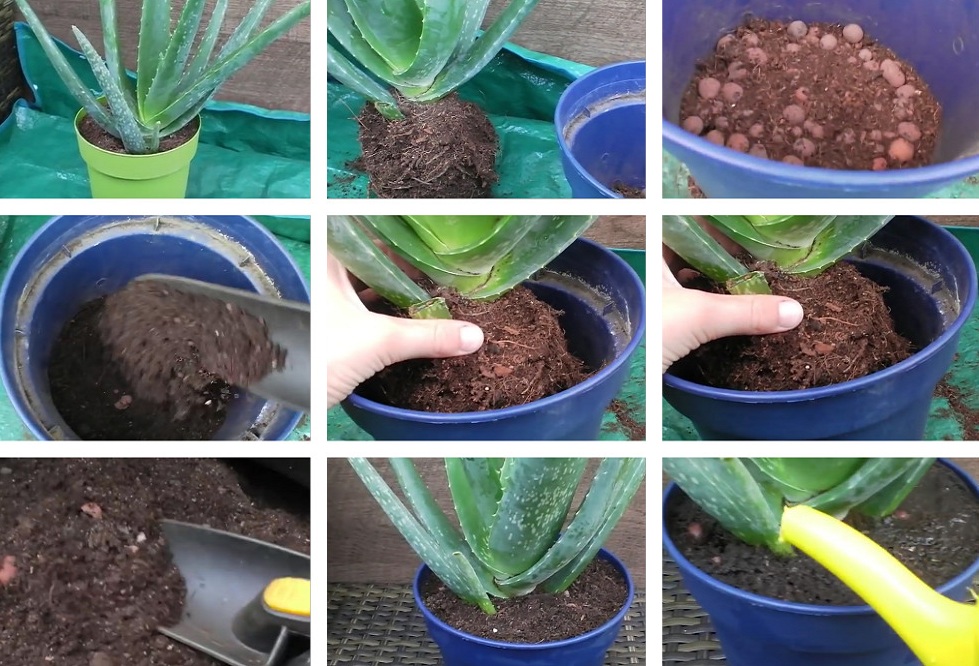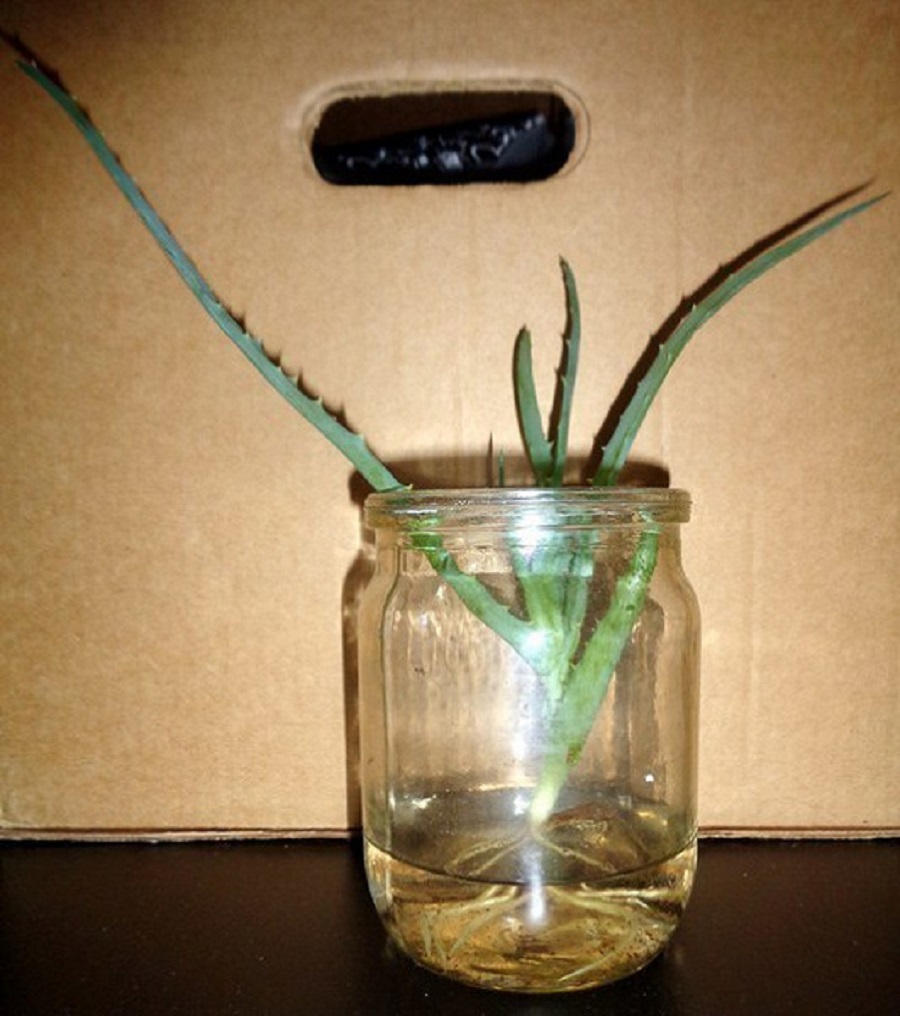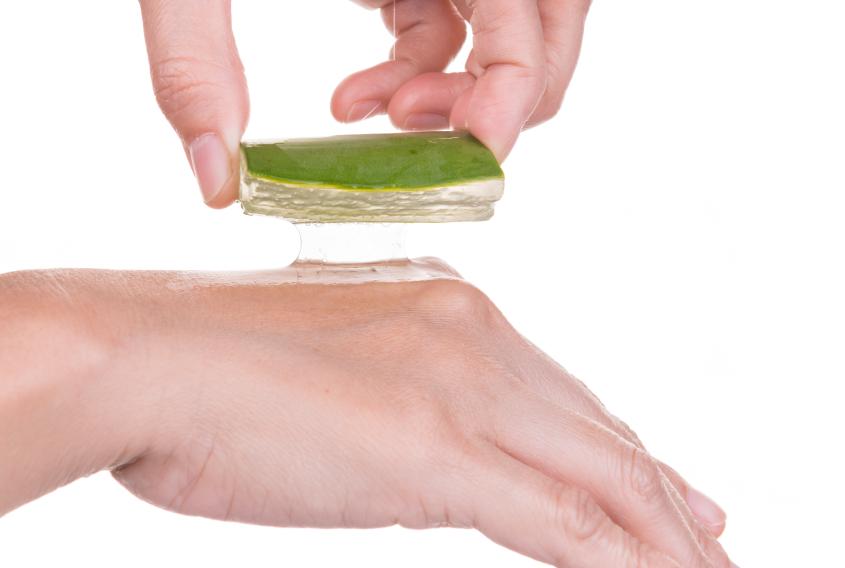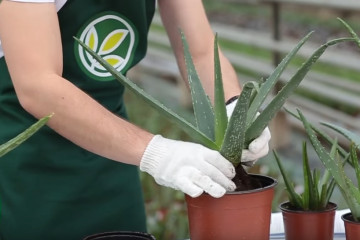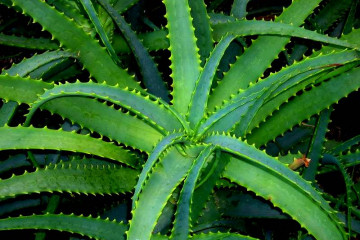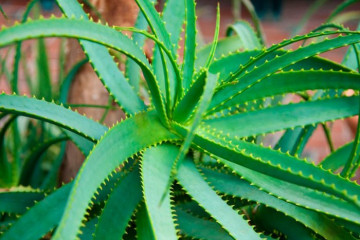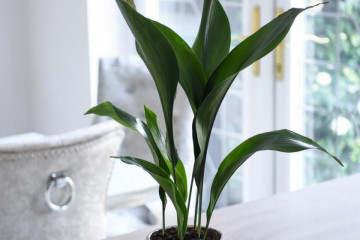Aloe vera flower: care options and medicinal properties of the plant
Content:
The warm and dry climate of some areas of Madagascar and South Africa may not be tolerated by all plants. One of the persistent representatives is aloe. A flower belonging to the Asphodel family from the genus of succulents. Alexander the Great also brought him to Europe. It is often called Barbadian. Morocco, Egypt, India, the island of Barbados - these are just some of the habitats of this beautiful representative of the flora.
Flower appearance
Aloe vera is a flower with thick, variegated xiphoid leaves on a low trunk. The fleshy body of the leaves is filled with a yellowish gel-like mass. The edges of the sheets are serrated and have spiny cilia. The leaves can reach 50-60 cm in length and are arranged in a spiral on the trunk, forming rosettes.
Aloe vera in translation - real aloe, in natural conditions throws out inflorescences of yellow or red. They are located on a vertical peduncle, the length of which can reach 90 cm. When kept indoors, it can bloom, but this is a rarity.
Flower care at home
Florists plant and grow aloe in a pot. Aloe vera, like a plant, is unpretentious, but requires a certain space for its content. The pot must be large and positioned so that the leaves have room to grow. For a long summer, aloe can be taken outside into the open air, with the onset of cold weather, it can be brought into the house.
Transfer
When it comes time to transplant the crop to another pot, it is advisable to do a series of preparations.
It represents the following actions:
- 10 days before work, abundant daily watering is carried out so that the earthen clod covering the roots is waterlogged and the plant can be easily removed;
- the bottom of the new flowerpot is covered with a drainage layer 5-7 cm high, using crushed brick, small pebbles, etc.;
- new soil is poured onto the prepared drainage with a pyramid, filling the flowerpot by half;
- the flower is removed from the previous pot, turning it upside down and holding the aloe by the trunk;
- clean the roots from the old soil, set them on the pyramid, straighten the roots, and fill the remaining gap with a new substrate;
- when filling, the soil is carefully tamped, making sure that the root collar is 2.5 cm below the edge of the pot.
At the end of the work, the soil is slightly moistened and the flower is removed to a shaded place. It is not recommended to water the plant for 5-6 days.
Older plants that do not fit in the container are best rejuvenated. For this, the lower large leaves and the top are cut off, the plant is watered abundantly for two weeks. Then, with proper care, it will give new leaves.
Reproduction
To propagate aloe vera, you need to take several shoots of the plant (the upper stem with several leaves) and put them in a jar of water. After 3-4 weeks, roots will appear on them. Then you can plant the aloe in a pot, observing all the transplant rules, and continue caring for the pet.
Lighting and temperature
If a plant grows in wildlife in arid and hot sunny conditions, this does not mean that it does not need to be watered and kept in the sun. Direct sunlight is harmful to the leaves. They may become covered with orange specks. Therefore, diffused light and a temperature of 18-220C are necessary conditions for keeping a flower at home.
Soil and fertilizing
Aloe loves nutritious soil, although, like cacti, it needs mechanical components (drainage components) placed in a pot. A store-bought potting medium should be suitable for growing succulents. However, you can prepare the soil yourself.
For this, the following components are selected:
- substrate for cacti or garden soil - 2 parts;
- sand - 2 parts;
- humus - 1-0.5 parts;
- crushed brick or expanded clay - 0.2 parts;
- fine charcoal - 0.2 parts.
The first three positions are mixed separately - this is the soil. Next, a mixture of brick, coal and the resulting soil (in a ratio of 1: 1: 1) is laid on the bottom - this is drainage.
Watering features
In the summer, they carry out daily watering at the root. The soil is well spilled so that water appears in the pan. It is drained after 2-3 hours so that some of the moisture rises to the roots.
The high temperature in the room in winter is akin to the summer season. This must be taken into account when choosing the frequency of watering when caring for a flower.
The healing properties of the plant
Having grown an aloe flower how to use it as a medicine? Succulent juice is used in the manufacture of cosmetics. The peculiarity of using aloe for treatment is that only the juice of leaves or sapwood (part of the stem) is suitable for these purposes. The sap is collected by cutting the leaves and squeezing them out with a press.
The dosage forms of aloe include:
- aloe oil;
- ointment;
- gel;
- syrup;
- extract in liquid form.
To restore the body after illness, aloe extract is administered intramuscularly or subcutaneously by injection.
Home treatment
The use of homemade recipes can carry not only a healing mission, but also harm. You only need to take leaves of three years old. What is the best way to use aloe flower for medicinal purposes at home? You can use only fresh juice from the leaves of the flower and the leaf itself. The juice is used to make drops and ointments. The sheet, cut in length into plates, is applied to the skin. What else can you do with aloe, you can find out by studying the recommendations of a specialist.
Varieties of medicinal plants
Aloe can be decorative and medicinal.Medicinal flowers include:
- Barbadian;
- spotty (soapy);
- tree-like (agave);
- present (faith);
- frightening.
People often confuse aloe vera and agave. It is believed that this is the same flower, but this is not the case. These are two varieties of aloe, and which one is medicinal? The centenary throws out red flowers when blooming, aloe real - yellow. Both types of plants have medicinal properties.
What does aloe cure for?
The juice and cut of succulent leaves are used to treat diseases:
- gastrointestinal tract;
- skin;
- anemia and improper metabolism;
- all types of abscesses (boils, trophic ulcers), purulent and open skin lesions;
- colds, ENT diseases and asthma;
- ophthalmic;
- tuberculosis (injections of aloe extract subcutaneously).
Aloe - what else does it heal? Draws out pus from abscesses, relieves sunburn, stops dysentery.
How to apply correctly
What can be made from aloe by using it as a medicine? Compresses from leaf plates are applied by applying to wounds. The action of fresh juice is beneficial in healing due to its antiseptic properties.
What is done with aloe leaves in order to apply them to wounds? Cut off a piece of leaf 3-4 cm long. Cut along a wide plane, cutting off the thorns on the sides. You will get two rectangular plates. Apply pulp to the sore spot, cover with gauze and bandage. You can use an adhesive plaster. Preparing records for future use is not worth it. Apply only fresh ones.
Aloe vera is an original and beautiful plant that decorates the interior, and a natural doctor who is always at hand. The flower is undemanding to care for, it can be safely left in the apartment for 2-3 weeks without supervision, after having abundantly watered.
Video

